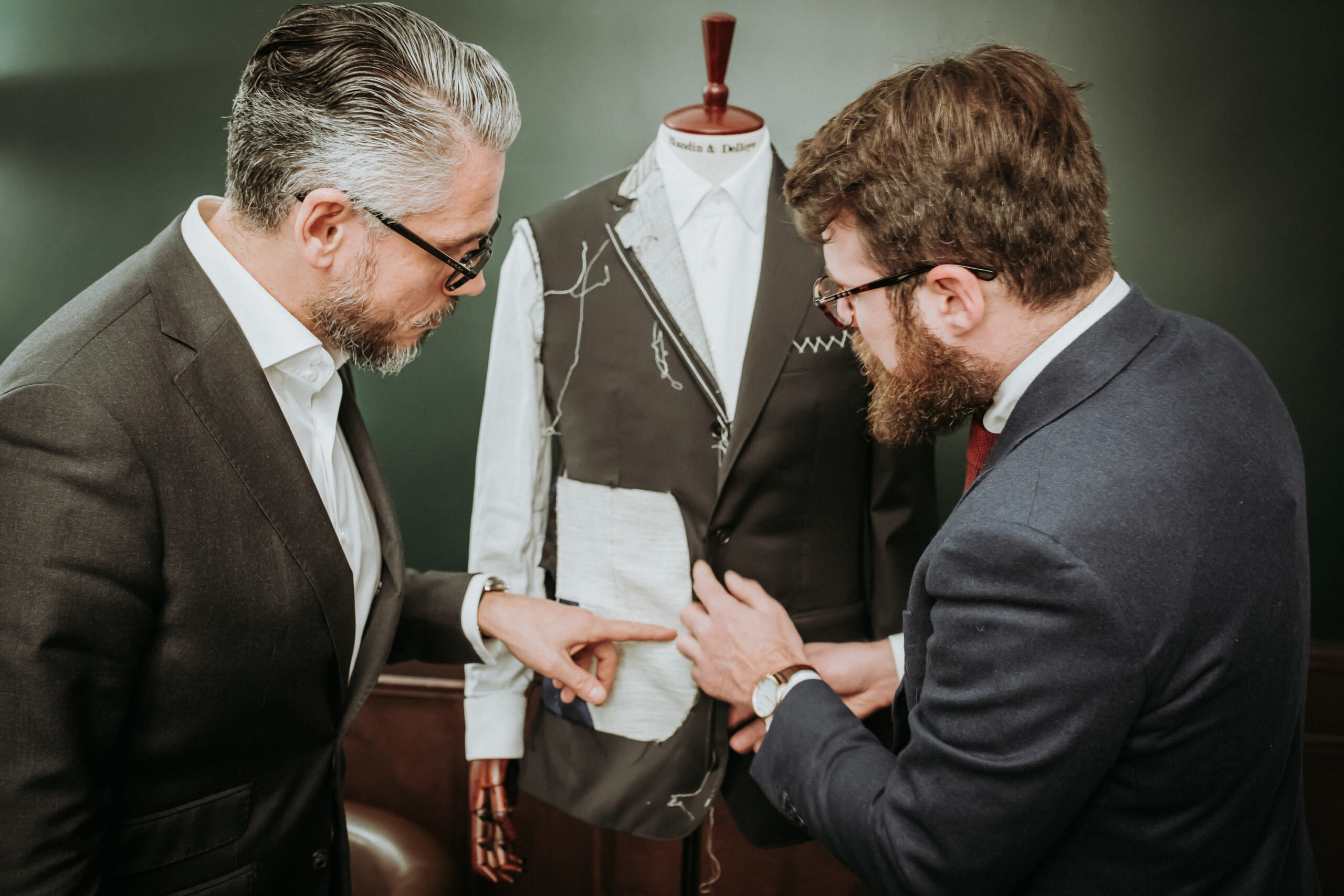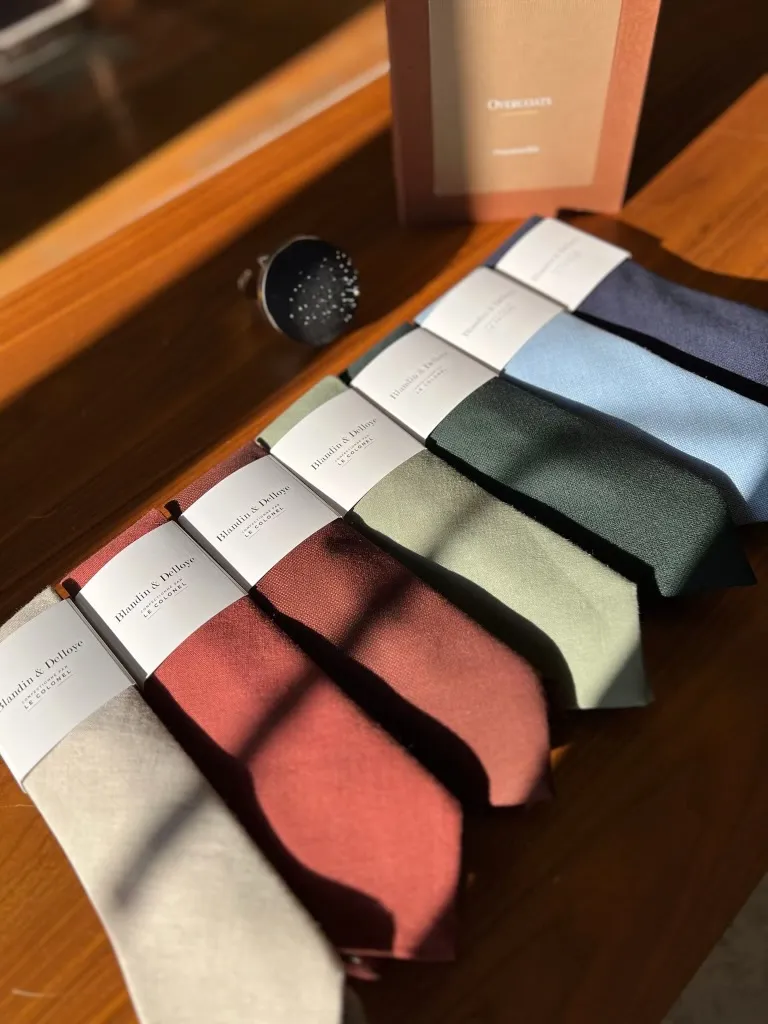
Discover how a suit is made
The parts concerned by the jacket’s interior construction are first and foremost the front, shoulder and sleeve head.
Shoulder and sleeve head
Depending on the style of the sleevehead, different reinforcements are used.
The most common is the Italian cut, characterized by a very natural-looking shoulder that follows the body’s shoulder line.
The English cut, on the other hand, has a fairly shallow shoulder slope with a very pronounced rolled sleeve.
These different lines are achieved by modifying the thickness and stiffness of the shoulder pads, which influence the shoulder slope, and by using sleeve-head cigarettes that “force” the fabric to roll back over the shoulder.
Below 2 Blandin & Delloye jackets: the one on the left is assembled with an English line, the other on the right is assembled with an Italian line.
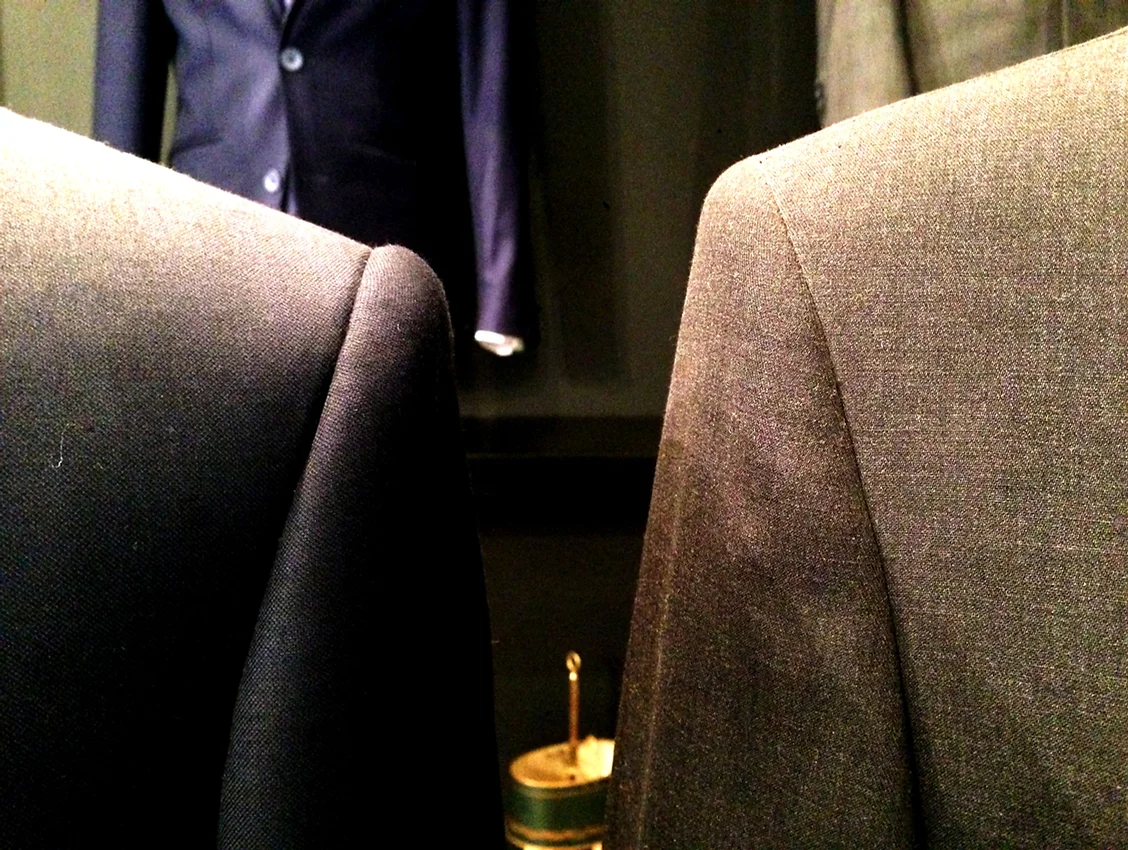
More “schematically”, here’s how the sleeve is sewn to the shoulder. Observe how it diverges from one to the other:
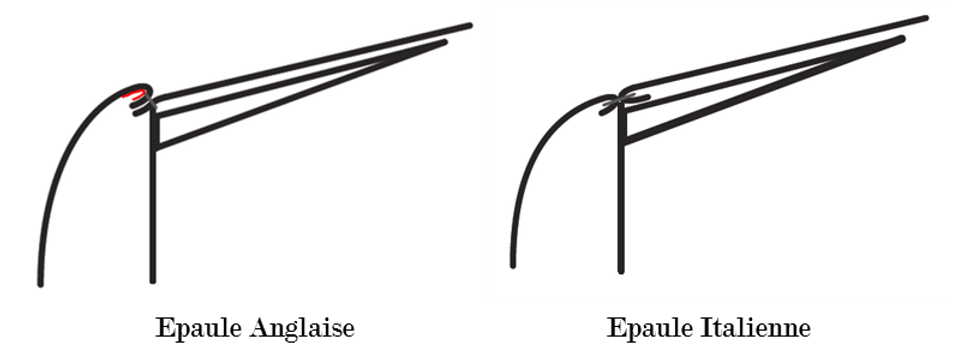
Jacket front
As you may have noticed, between the lining of your jacket and the outer fabric, there are reinforcements on the inside of your jacket.
These reinforcements are designed to ensure a clean, figure-hugging fit, as well as the garment’s longevity over time.
A plastron is fitted to the upper front of the jacket to ensure good chest development. The plastron gives the front of the jacket a smooth, rounded bust and a springy appearance.
Three different methods are used to assemble the front of the jacket. Here’s how we define them, which may vary at your discretion:
- Fused construction : As the name suggests, this method makes extensive use of fusing. The front of the jacket, from the shoulder to the hem, is covered with high-temperature fusing. In addition, all reinforcements between pieces and on pockets are fused.
- Half canvas construction: Similar to fused construction, it features a wider front panel that doubles as the collar lapel, as this assembly borrows the stitched lapel assembly method from traditional assembly.
- Full Canvas: this is the assembly method used by artisan tailors, and has also been adapted for garment makers. The front of the jacket is fully interfaced, with the fabric sewn to the shoulder and finishing at the bottom. The lapel is quilted. The traditional assembly method for the reinforcements is exceptional: they are joined to the main fabric by more or less loose seams, allowing greater flexibility between each of the pieces that make up the jacket.
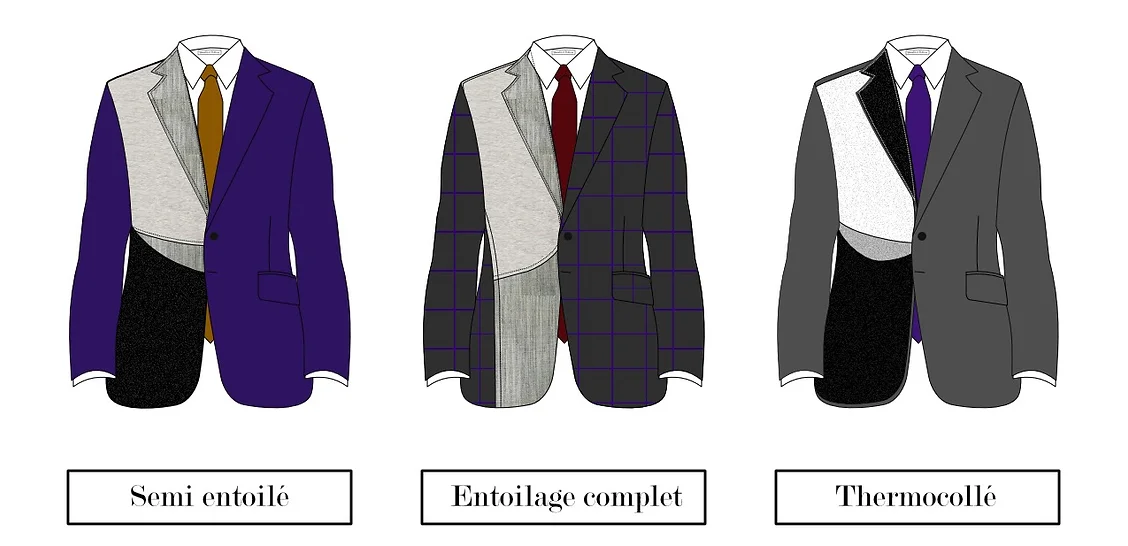
Of course, I’m not telling you that full Canvas assembly isn’t better: it offers far superior comfort and outstanding durability, not least because fusibles lose their rigidity over time and tend to separate from the fabric in places, creating little bubbles on the front of the jacket.
Despite the fact that the ready-to-wear industry has made spectacular advances in the quality fused construction, the fact remains that fusing denatures the feel of the fabric.
What’s more, fusing are made of synthetic materials that alter the thermoregulatory qualities of wool: you’ll always feel cooler in a suit made from canvas than in a suit made from fusible webbing.
From a certain level of fabric nobility upwards, we recommend opting for the traditional fabrication offered in our Tuilerie line.
jacket fronts
As you may have noticed, between the lining of your jacket and the outer fabric, there are reinforcements on the inside of your jacket.
These reinforcements are designed to ensure a clean, figure-hugging fit, as well as the garment’s longevity over time.
A plastron is fitted to the upper front of the jacket to ensure good chest development. The plastron gives the front of the jacket a smooth, rounded bust and a springy appearance.
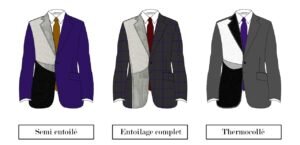
Three different methods are used to assemble the front of jackets. Here’s how we define them:
Fusing : As the name suggests, this method makes extensive use of thermobonding. The front of the jacket, from the shoulder to the hem, is covered with high-temperature thermobonding. In addition, all reinforcements between pieces and on pockets are fused.
Half Canvas : Similar to iron-on assembly, it features a wider front panel that doubles as the collar lapel, as this assembly borrows the stitched lapel assembly method from traditional assembly.
Traditional assembly: this is the assembly method used by artisan tailors, and has also been adapted for garment makers. The front of the jacket is fully interfaced, with the fabric sewn to the shoulder and finishing at the bottom. The lapel is quilted. The traditional assembly method for the reinforcements is exceptional: they are joined to the main fabric by more or less loose seams, allowing greater flexibility between each of the pieces that make up the jacket.
Of course, I’m not telling you that traditional assembly isn’t better: it offers far greater comfort and outstanding durability, particularly as fusibles lose their rigidity over time and tend to come apart from the fabric in places, creating little bubbles on the front of the jacket.
Despite the fact that the ready-to-wear industry has made spectacular advances in the quality of iron-on assemblies, the fact remains that iron-on denatures the feel of the fabric.
What’s more, fusibles are made of synthetic materials that alter the thermoregulatory qualities of wool: you’ll always feel cooler in a suit made from canvas than in a suit made from fusible webbing.
From a certain level of fabric nobility upwards, we recommend opting for the traditional fabrication offered in our Tuilerie line.
